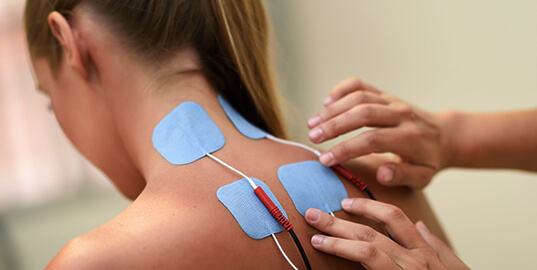Marijuana is a drug that causes a range of adverse consequences for health, psychological condition and social stand. It does not cause physical dependence, because the user does not feel a strong physical crisis after quitting it. However, rehabilitation is necessary to overcome the psychological dependence on marijuana. Getting rid of a marijuana addiction requires safe and painless cannabinoids addiction program.
1. Cannabinoids addiction program – Diagnostics
The first and most important phase of treatment. The essence of diagnosis is to assess the physical and mental condition of the patient. In order to assess the physical condition of the patient, the standard diagnosis examination includes:
- urine test
- tests for hepatitis B and C, as well as for HIV infection
- general analysis of blood
- biochemical blood test
- ECG
- examination by the internist doctor

In order to assess the mental state of the patient, a standard diagnosis examination includes: psycho-diagnosis, or psychological tests which will determine the level of dependence and how much did the use of cannabis affect the mental healt. Also, these tests will determine whether there are signs of mental disturbance or depression. They will also show the degree of motivation for rehabilitation, self-criticism and the conservation of voluntary mechanisms.
After diagnostics, team of doctors examine the results. They do it in order to develop a treatment strategy and plan. In the case that the diagnosis reveals serious deviations in the tests, doctors can organize additional tests or treatment for the accompanying diseases. Depending on the problem, doctors can prescribe MRT, EEG, ultrasound, x-ray, endoscopy and analyses of the concentration of drugs and narcotics. There can also be an examinations by cardiologists, neurologists, endocrinologists, specialists in infectious diseases etc.
2. Pharmacotherapy
3. Cannabinoids addiction program – N.E.T. (NeuroJet Therapy)

This therapy is designed to stabilize the endorphin and neurotransmitter system. It is a very promising method actively applied in Switzerland, Great Britain and Russia. The purpose of this treatment is to stimulate those structures in the brain that secrete natural satisfaction hormones. The regular use of drugs disrupts this process. After quitting narcotics, endorphins are not secreted and the addict feels sadness, depression and apathy. The NET therapy reestablishes effectively the balance of neurotransmitters, which allows the patient to regain a normal mood, eliminating nervousness and the desire for drugs.
4. Informational Therapy
Just like a computer, the human brain works with the help of nerve cells – neurons (hardware) and a control system – higher nervous activity, which represents a set of impressions, skills, behavior patterns, value systems and willing mechanisms (software). Just as harmful information in the form of the viruses can damage a computer system, addiction destroys brain cells and the psyche of the person that consumes drugs. In order to reestablish brain functions, it is necessary to use an antivirus or informational therapy.
This unique method for the treatment of addictions is primarily based on a combination of pharmacotherapy and the latest computer technology. The essence of the information therapy is to transmit special information in the form of encoded audio and video signals to the brains of addicts, in order to delete obsessive thoughts, i.e. the desire for marijuana. Information is divided into groups of short striking images on a subconscious level. The patient spends a few hours in a medically induced sleep, in order to receive information much more efficiently. Signals are transmitted by a computer, with the help of special glasses and headphones. The result of this therapy is the appearance of indifference and a negative attitude towards drugs.
5. Cannabinoids addiction program – Psychotherapy
Psychotherapy – involves individual, family and group psychotherapy, body-oriented psychotherapy, meditation, autogenic training, trainings for the development of communicative skills, relaxation, art therapy, transactional analysis, family therapy, individual and group education. Our experts help patients to reestablish good communication in their immediate environment and with their families. An action plan for the next month is drawn up with the help of our psychologists. The patient learns how to react to provocative situations, as well as protection methods against relapse. Free time is provided for sports, walking along the Danube, playing billiards, table tennis, going to the gym, the museum etc.
6. Physiotherapy
Physiotherapy involves a combination physical and medical therapy, as well as deep tissue massage. Massage has a tranquilizing and relaxing effect. When a person goes through the process of quitting drugs, dopamine levels are lower than in the case of non-addicts. Massage helps to normalize the process of dopamine secretion in patients undergoing addiction treatment. Massage contributes to the detoxification process by accelerating blood circulation and lymph flow, accelerating thus the elimination process of toxic substances in the body. One session of physiotherapy is included in the price of the treatment package. The cost of each next session is 30 Euros per session.
7. Outpatient treatment
The outpatient stage, of the treatment begins after discharging the patient from hospital. It lasts one year and includes regular monthly checks (included in the price of the treatment package). The patients remain in contact with the hospital and doctors give them the necessary advice and assistance at any time in the event that problems arise. Upon discharge from hospital, patients and their relatives receive a discharge note, as well as detailed advice and guidance related to the recommended therapy. Support from the nearest people significantly increases the chances of success. Patients from abroad will be in contact with doctors via e-mail, Skype and phone.

8. Anti-relapse outpatient support
One of the most important stages for the complete recovery of the addict is the stage of preserving treatment results. The clinic will be in contact with the patient and his/her family for at least one year. Respecting outpatient treatment rules, following the action plan, learning a new way of life, taking the supportive medical therapy and coming to check-ups help the patient to feel safe and comfortable, when sober, and ensure a high success rate of treatment.
